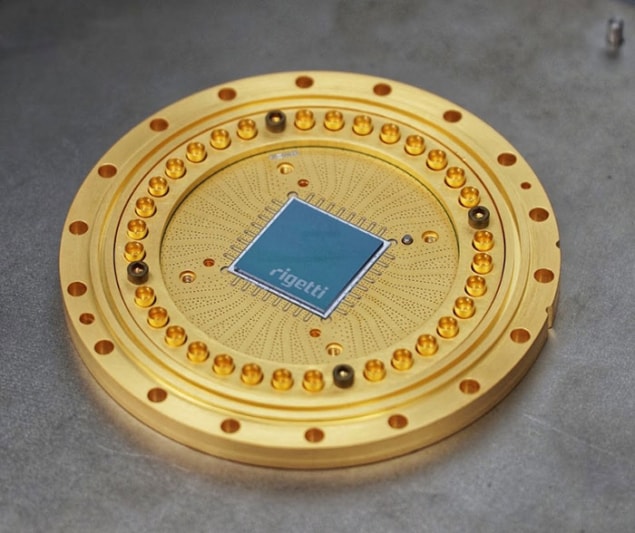
Cloud quantum computing has been used to calculate the binding energy of the deuterium nucleus – the first-ever such calculation done using quantum processors at remote locations. Nuclear physicists led by Eugene Dumitrescu at Oak Ridge National Laboratory in the US used publicly available software to achieve the remote operation of two distant quantum computers. Their work could lead to new opportunities for scientists in many fields who want to use quantum simulations to calculate properties of matter.
In previous research, scientists have worked alongside quantum computer hardware developers to create quantum simulations. These typically use between two and six qubits to calculate a quantum property of matter – calculations that can be extremely time-consuming to do with a conventional computer. As the number of qubits available in quantum computers increase, the hope is that quantum simulations will be able to do calculations well beyond the reach of even the most powerful conventional computers. However, doing simulations alongside quantum computer specialists can be an inefficient process and the research would be much more streamlined if scientists were able to operate quantum computers themselves.
Rigetti and IBM
In response to this issue, two companies have released software which allows their quantum computers – Q Experience from IBM, and the 19Q from Rigetti – to be operated remotely through cloud services. The IBM quantum processor has 16 qubits, while the Rigetti device has 19 qubits. Dumitrescu’s team used the software to calculate the binding energy of the deuterium nucleus – the energy required to prise apart the proton and neutron that comprise the nucleus.
The team’s novel method required some precautions. Working via the cloud, the rate at which calculations could be made was limited, meaning the researchers needed to adjust their quantum measurements to account for the slower rate. With such measures in place, Dumitrescu’s team calculated the binding energy on both quantum computers to within 2% of the actual measured value.
Non-specialists should succeed
The success of Dumitrescu and colleagues’ experiment demonstrates that scientists do not need to be quantum computer specialists to operate quantum computers themselves. Soon, scientists in many different fields could be making use of cloud quantum computing.
The calculations are described in a preprint on arXiv.



